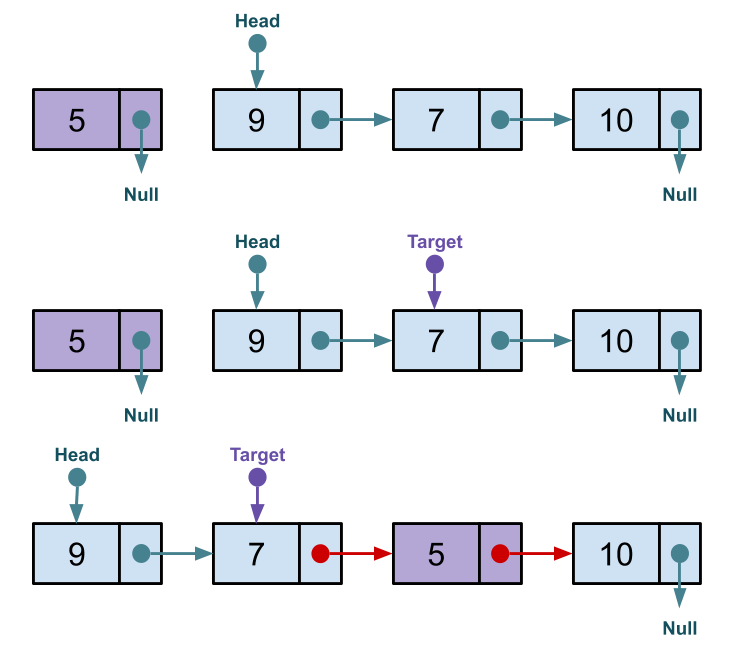Insert Operation
- Trace the basic operations of a (singly) linked list implementation.
- Understand the basic operations of a (singly) linked list well enough to implement them.
Suppose we have a linked list with $n$ elements (nodes), and we want to insert a new node at index $k$. That is, we insert a new node between elements at indices $k-1$ and $k$. After the insertion, we will have $n + 1$ elements:
- The node at index $k - 1$ before the insertion will remain at that index after the insertion.
- The node at index $k$ before the insertion will be at index $k+1$ after the insertion.
- The newly added node will be at index $k$.
For example, we have a linked list with three nodes at indices 0, 1, and 2.

We will insert a new node at index 2:

Exercise Complete the implementation of insert which adds a new node at the given index.
public void insert(int index, T t) {
// TODO Implement me!
}
Hint: Use the following visualization as guidance.

Solution
public void insert(int index, T t) {
Node<T> target = head;
for (int counter = 0; counter < index - 1; counter++) {
target = target.next;
}
Node<T> node = new Node(t);
node.next = target.next;
target.next = node;
}
Caution: the implementation above fails to account for edge cases or cases where index is invalid!